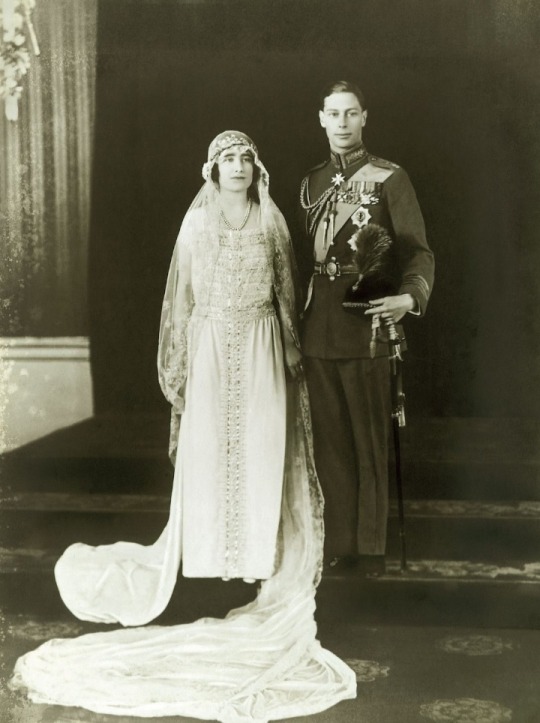Text
The Veluwemeer Aqueduct, located in the Netherlands, is a unique water bridge that allows ships to sail over a highway. ⛵🚙
📽: Floris Hermans
—
Veluwemeer Aqueduct is a 25-metre (82 ft) long, 19 meter wide, navigable aqueduct (also known as a water bridge) located over Veluwemeer Lake in Harderwijk, Netherlands. It was opened in 2002 and bypasses the N302 road.
2 notes
·
View notes
Text
SAINT OF THE DAY (April 27)

On April 27, the Catholic Church honors Saint Zita, a 13th-century Italian woman whose humble and patient service to God has made her a patron saint of maids and other domestic workers.
Born into poverty during the early 1200s, Zita was taught by her mother from an early age to seek God's will in all circumstances.
She had already developed a strong prayer life by the time she was sent to work in the home of the Fatinelli family in Lucca at the age of 12.
Zita's employers lived near a church where she managed – by waking up extremely early in the morning – to attend daily Mass.
She looked upon her work primarily as a means of serving God and kept herself mindful of his presence during long hours of exhausting tasks.
Her presence in the Fatinelli household, however, was inexplicably unwelcome and met with harsh treatment for a number of years.
Zita suffered hostility and abuse from her employers, including fits of rage and beatings.
The young woman faced these trials with patience and inner strength developed through a life of prayer.
In time, the members of the household came to value her service and appreciate the virtues she had acquired through God's grace.
Zita maintained her humility when she was promoted to a position of responsibility within the Fatinelli home.
She continued to view her earthly responsibilities as a service to God and to seek his presence through prayer and fasting.
She also refused to hold a grudge against those who once mistreated her.
Within her new household role, Zita was faithful to Christ's admonition that superiors should conduct themselves as the servants of all.
She was kind to those under her direction and mindful of the poor through frequent almsgiving to the point of personal sacrifice.
Throughout her life, Zita found a source of strength and consolation in the Mass and Holy Communion, which frequently moved her to tears.
Despite her many responsibilities, she frequently set aside time to recall God's presence through contemplative prayer in the course of the day.
One anecdote relates a story of Zita giving her own food or that of her master to the poor.
One morning, Zita left her chore of baking bread to tend to someone in need. Some of the other servants made sure the Fatinelli family was aware of what happened.
When they went to investigate, they claimed to have found angels in the Fatinelli kitchen, baking the bread for her.
After foretelling her own death and spiritually preparing for it, Zita died in Lucca on 27 April 1271.
It is said that a star appeared above the attic where she slept at the moment of her death.
Many residents regarded her as a saint and began to seek her intercession, to which a large number of miracles were attributed.
Some writers even began referring to the city of Lucca as “Santa Zita” in her honor.
The Fatinelli family, which had once caused Zita such extreme suffering, eventually contributed to the cause of her canonization.
The earliest account of her life was found in a manuscript belonging to the family and published in 1688.
The Church's liturgical veneration of St. Zita was introduced in the early 1500s and confirmed by Pope Innocent XII in 1696.
In 1580, her body was exhumed and found to be miraculously incorrupt, but it has since been mummified.
It is venerated today in the Basilica of St. Frediano, where she attended Mass during her life.
Saint Zita is the patron of maids and domestic servants. She is often appealed to in order to help find lost keys.
5 notes
·
View notes
Text
Belgian Malinois are the acrobats of dogs. 🐶🤸
3 notes
·
View notes
Text








#Commonwealth#Modern Commonwealth#London Declaration#London Declaration 1949#Australia#Canada#India#New Zealand#Pakistan#Sri Lanka#South Africa#United Kingdom#56 nations#Rt Hon Patricia Scotland KC
0 notes
Text


•

•

•

•

•

•

#King Charles III#His Majesty The King#God Save The King#Queen Camilla#British Royal Family#newspapers#front pages#good news#cancer#cancer treatment
6 notes
·
View notes
Text

On the Feast of St. Mark, 25 April 1467, at the close of a festival in Genazzano, Italy, a cloud descended upon an ancient 5th-century deteriorated church, dedicated to Our Lady of Good Counsel.
When the cloud disappeared, the festive crowd found a small, fragile image of the Blessed Virgin and Child on a thin sheet of plaster.
The painting is said to have hung in mid-air, suspended without support, floating on a small ledge.
This particular fresco is said to date to the time of the Apostles. It has long been venerated in Albania’s capital city, Scutari.
Much of the church of Our Lady of Good Counsel was destroyed in World War II, but the image remained intact and in place.
The miraculous image is still there today after more than 500 years.
Countless miracles have been attributed to the prayerful intercession of Our Lady of Good Counsel.
Many pilgrims visit the church in Genazzano and take part in the annual spring celebration observed on April 25.
Elsewhere in the world, the feast is celebrated on April 26.
0 notes
Text

ON THIS DAY:
The wedding of Prince Albert, Duke of York (later King George VI), and Lady Elizabeth Bowes-Lyon (later Queen Elizabeth The Queen Mother) took place on 26 April 1923 at Westminster Abbey.
The bride was a member of the Bowes-Lyon family, while the groom was the second son of King George V.
—
George VI (14 December 1895 – 6 February 1952)
Elizabeth Angela Marguerite Bowes-Lyon (4 August 1900 – 30 March 2002)
#King George VI#Prince Albert#Duke of York#Lady Elizabeth Bowes-Lyon#Queen Elizabeth The Queen Mother#British Royal Family#wedding anniversary#royal wedding#Westminster Abbey
1 note
·
View note
Text

SCULPTURE: “LADY GODIVA” by John Thomas (1813 - 1862), UK.
According to the legend dating back to at least the 13th century, Lady Godiva (b. around 1040 — d. between 1066 and 1086), a countess whose name (Godgifu or Godgyfu) translates from Latin as 'gift of God,' rode through the streets of Coventry, Warwickshire, England, in 11th century AD, with nothing but her long hair covering her.
This act was a condition set by her husband Leofric, Earl of Mercia, to lower taxes for the people.
She rode through the town while the inhabitants stayed indoors with windows and doors shut.
According to that legend, her husband, moved by her bravery, kept his promise and reduced the taxes.
This myth portrays Lady Godiva as possibly the first woman to use her body to defend a social cause.
Maidstone Museum, Kent
10 notes
·
View notes
Text



Why is there a bale of hay hanging in Tower Bridge?
It illustrates a little-known London law around bridge maintenance on The Thames, which states that if there is a reduced height due to works, a bale of straw must be hung underneath to signal to passing river traffic.
0 notes
Text








#Tower Bridge#Tower Bridge (1894)#Edward Cruttell#Patrick Molineux#bridge#exhibition#landmark#construction#Victorian era
0 notes
Text
SAINT OF THE DAY (April 25)

St. Mark, the Evangelist, is the author of the second Gospel and the patron saint of notaries.
He wrote the Gospel in Greek for the Gentile converts to Christianity.
Tradition says the Romans asked St. Mark to record the teachings of St. Peter about Jesus.
St. Mark is often depicted as a winged lion in religious art.
St. Mark is also said to have traveled with St. Paul and St. Barnabas, who was Mark's cousin, on their missionary journey through Cyprus.
St. Mark is said to have founded the Church in Alexandria.
He is sometimes called John Mark in the New Testament.
Both he and his mother, Mary, were highly esteemed in the early Church. His mother's house in Jerusalem served as a meeting place for Christians.
2 notes
·
View notes
Text
The First Official Gala Portrait of King Frederik X of Denmark and his Australian-born wife Queen Mary




The portrait, which shows the couple wearing the Order of the Elephant on chains, will be displayed in state institutions, including at Danish embassies and consulates around the world.
Taken at Christiansborg Palace in Copenhagen, it is the first photo of Mary wearing the crown jewels as queen since ascending the throne in January.
In the portrait, Mary wears an emerald set with a tiara, necklace earrings, and a large broach.
The set was designed by jeweller CM Weisshaupt and was a gift from Christian VIII to Queen Caroline Amalie, the Royal House states on its website.
The set’s emeralds and diamonds are partly reused items from the jewellery collection of Christian VI’s Queen Sophie Magdalene and from older bracelets, combined with newly purchased stones, the Royal House website states.
Mary also wears a diamond miniature portrait of the king in a bow of Order of Dannebrog ribbon, in keeping with the tradition of female members of the royal family wearing a portrait of the sovereign.
25 April 2024
#King Frederik X of Denmark#Queen Mary of Denmark#Danish Royal Family#official gala portrait#Order of the Elephant#Christiansborg Palace#CM Weisshaupt#Christian VIII#Queen Caroline Amalie#Christian VI#Queen Sophie Magdalene#Order of Dannebrog#crown jewels#House of Glücksburg#House of Bernadotte#House of Monpezat
35 notes
·
View notes
Text

Types of wolves. 🐺
✏️: AnimalSpot
3 notes
·
View notes
Text
The Prince of Wales Visits The West Midlands









Prince William visits St. Michael's Church of England School on 25 April 2024 in Birmingham, England.
The Prince was initially invited to visit the school in a letter posted on X by twelve-year-old Freddie Hadley to learn about the award-winning student-led initiatives available to pupils to support their mental health and wellbeing.
📷: Samir Hussein / WireImage

Credit: SStmichaels via X
#Prince William#Prince of Wales#British Royal Family#St. Michael's Church of England School#Birmingham#Freddie Hadley#mental health#mental health support#wellbeing
4 notes
·
View notes
Text

Photographer Mandy Wilson has captured an extraordinary image showing a newborn dolphin riding on mom’s back around Penguin Island, near Perth, off Western Australia's coast — and seemingly smiling in delight. 🐬
2017
2 notes
·
View notes
Text

April 25 is the national day of commemoration of Australia and New Zealand for victims of war and for recognition of the role of their armed forces.
It marks the first major military action fought by Australian and New Zealand forces during the First World War.
ANZAC stands for Australian and New Zealand Army Corps.
The soldiers in those forces became known as ANZACs.
Anzac Day is a commemoration of the anniversary of the landing of Australian and New Zealand troops on 25 April 1915 at Gallipoli, Turkey.
When Great Britain declared war against Germany for its invasion of Belgium in 1914, Australia and New Zealand, as Dominions within the British Empire, regarded themselves automatically also at war.
At dawn on 25 April 1915, the first of approximately 70,000 soldiers from the Allies landed at Gallipoli.
The objective was to drive through to Istanbul, take Turkey out of the war, and to provide supplies to Russia in its fight against Germany.
Out of these 70,000 soldiers, more than 20,000 were Australian and New Zealand soldiers.
What had been planned as a bold stroke became a stalemate after the invading troops failed to reach their objective on the first day.
For the next eight months, they clung to the land they had captured, before eventually withdrawing at the end of 1915.
After both sides had suffered heavy casualties, the Allied forces were evacuated.
It is estimated that 8,700 Australian and 2,700 New Zealanders were killed.
One year later, in 1916, the first anniversary of the landing was observed in Australia, New Zealand, England, and by troops in Egypt.
That year, April 25 was officially named ‘Anzac Day’ by Acting Australian Prime Minister George Pearce.
Today, we speak of an ‘Anzac tradition,’ meaning the ideals of courage, endurance and mateship that are still relevant to this day.
#Anzac Day#Anzac Day 2024#Australia#New Zealand#April 25#25 April 1915#George Pearce#World War I#Gallipoli#Turkey#Allied Forces#Lest We Forget#remembrance#commemoration#military action#Australian and New Zealand Army Corps#ANZAC#ANZACs
8 notes
·
View notes






